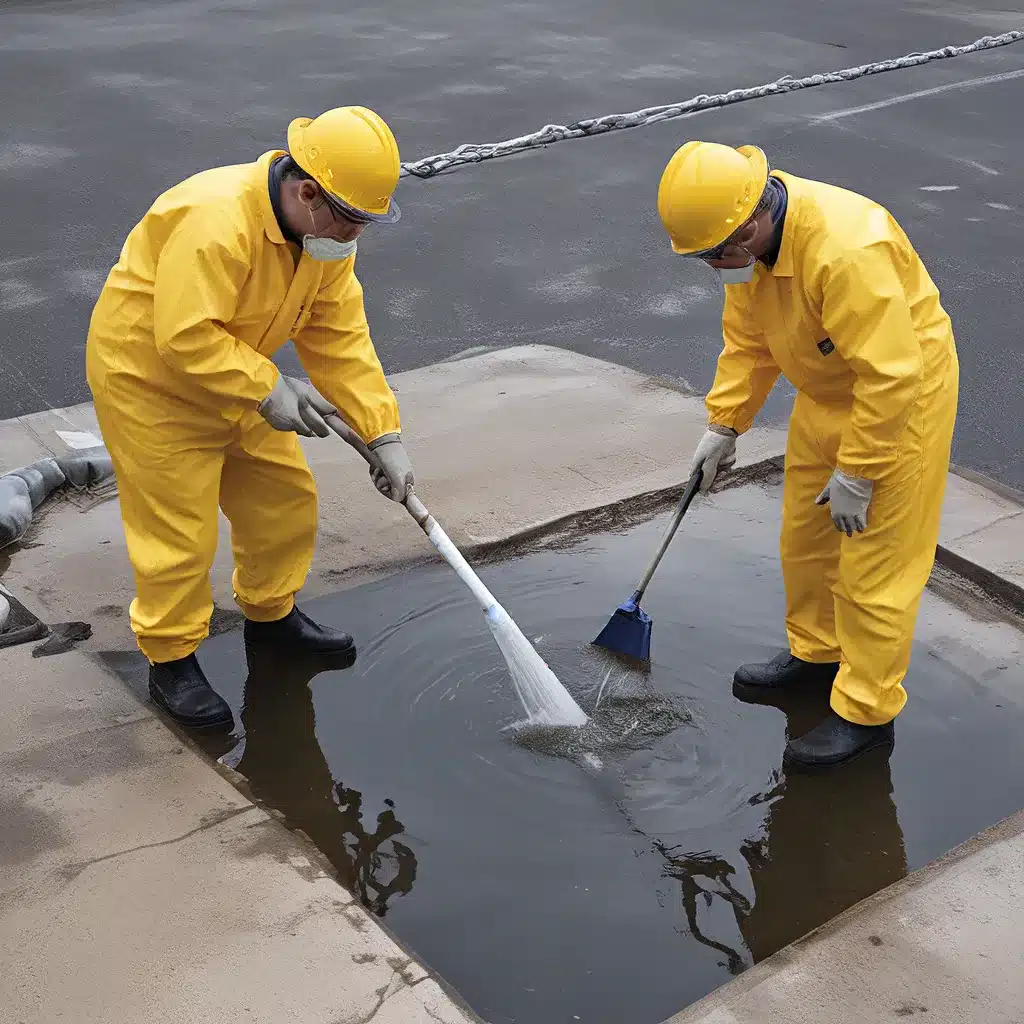
Ah, the world of water treatment – a domain riddled with challenges, regulations, and hazardous materials that could make even the most seasoned professional’s head spin. But fear not, my fellow environmental warriors, for I am here to guide you through the murky waters of hazardous material cleaning in the water treatment industry.
Mastering the Maze of Hazardous Waste Regulations
Let’s start with the basics, shall we? The Environmental Protection Agency (EPA) has a rather complex system when it comes to classifying hazardous wastes. While the F-list covers a wide range of common manufacturing byproducts, the K-list is where things get really interesting. These are the so-called “source-specific” hazardous wastes, generated by specific industries or processes.
According to the EPA, there are 13 industries that can produce K-listed hazardous wastes, including metal plating, wood preservation, and pesticide manufacturing. And let me tell you, these waste streams are not for the faint of heart. Think sludges, residues, and byproducts that could make even the bravest of us cringe.
But, as they say, knowledge is power. By understanding the nuances of these waste lists, you can ensure your facility is in compliance and minimizing the risks to both the environment and the community. It’s a delicate dance, but one that’s essential for any water treatment operation worth its salt.
Navigating the Treacherous Waters of Hazardous Material Handling
Now, let’s talk about the nitty-gritty of hazardous material handling. Picture this: you’re standing in the middle of your water treatment facility, surrounded by a labyrinth of pipes, tanks, and equipment. And somewhere in this maze, there’s a nasty spill of some unknown chemical cocktail. What do you do?
First and foremost, safety is the name of the game. Proper personal protective equipment (PPE), thorough training, and strict protocols are non-negotiable. Believe me, you don’t want to be the one who ends up in the hazmat suit, dealing with a chemical catastrophe.
But the challenges don’t stop there. Hazardous waste storage and transportation are a whole other beast. You need to be a master of manifests, labeling, and, let’s not forget, the dreaded hazardous waste manifest. It’s like navigating a maze, but one where the stakes are higher than ever.
Partnering with a reputable hazardous waste management company can be a lifesaver in these situations. They have the expertise, resources, and tailored solutions to ensure your business stays in compliance and your community stays safe. Trust me, you’ll want them on speed dial.
Embracing the Power of Sustainable Solutions
But let’s not forget the bigger picture here. Hazardous material cleaning isn’t just about ticking regulatory boxes – it’s about creating a cleaner, more sustainable future. And that’s where the real heroes of the water treatment industry come in.
Imagine a world where your facility doesn’t just manage its hazardous waste, but actively seeks out recycling and reuse alternatives. Where your team is dedicated to going above and beyond industry standards, constantly striving to protect the environment and the communities you serve.
Inland Waters Inc., for example, has made it their mission to be at the forefront of the environmental services industry. They understand that navigating the complexities of hazardous material cleaning is not just a legal obligation, but a crucial step towards a brighter, more sustainable tomorrow.
So, fellow water treatment enthusiasts, let’s roll up our sleeves and dive into the depths of hazardous material cleaning. It may be a daunting task, but with the right knowledge, the right partners, and a unwavering commitment to sustainability, we can conquer the challenges and pave the way for a cleaner, greener future. Who’s with me?


